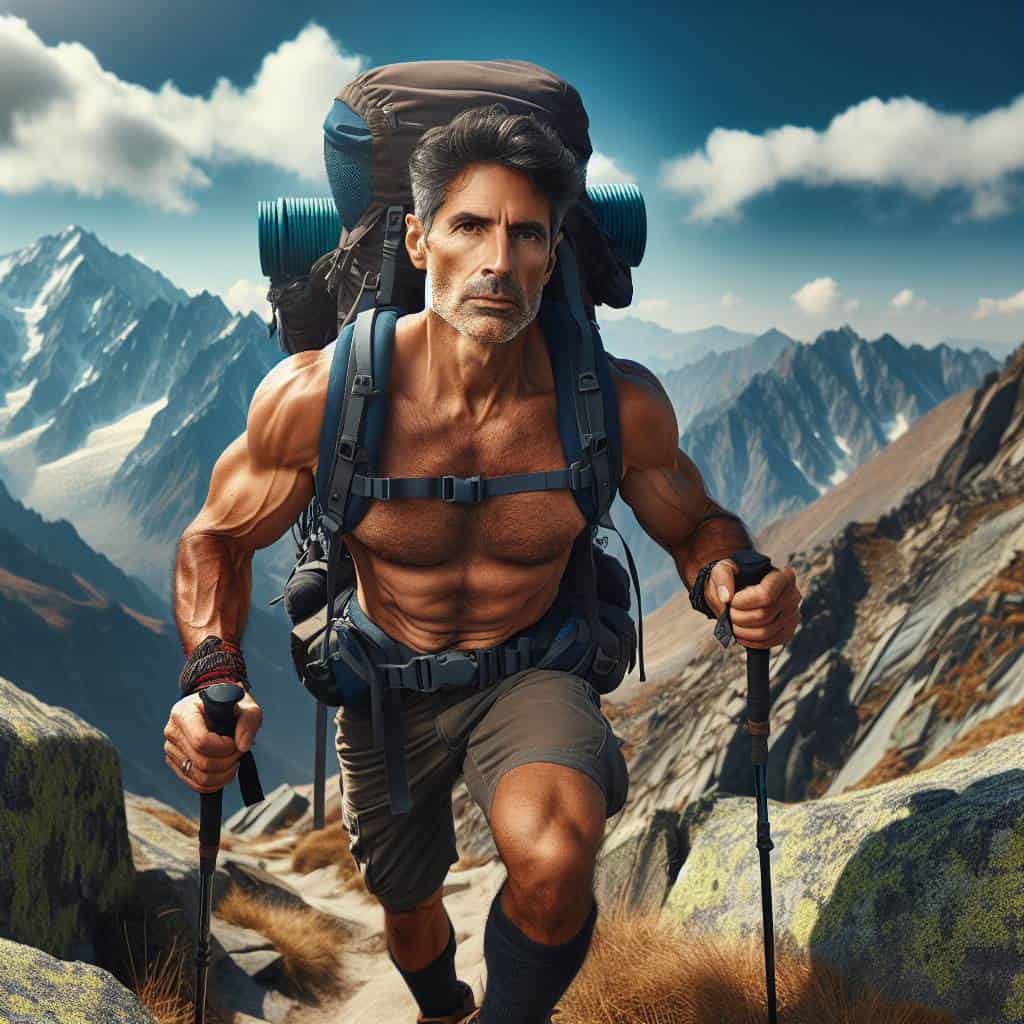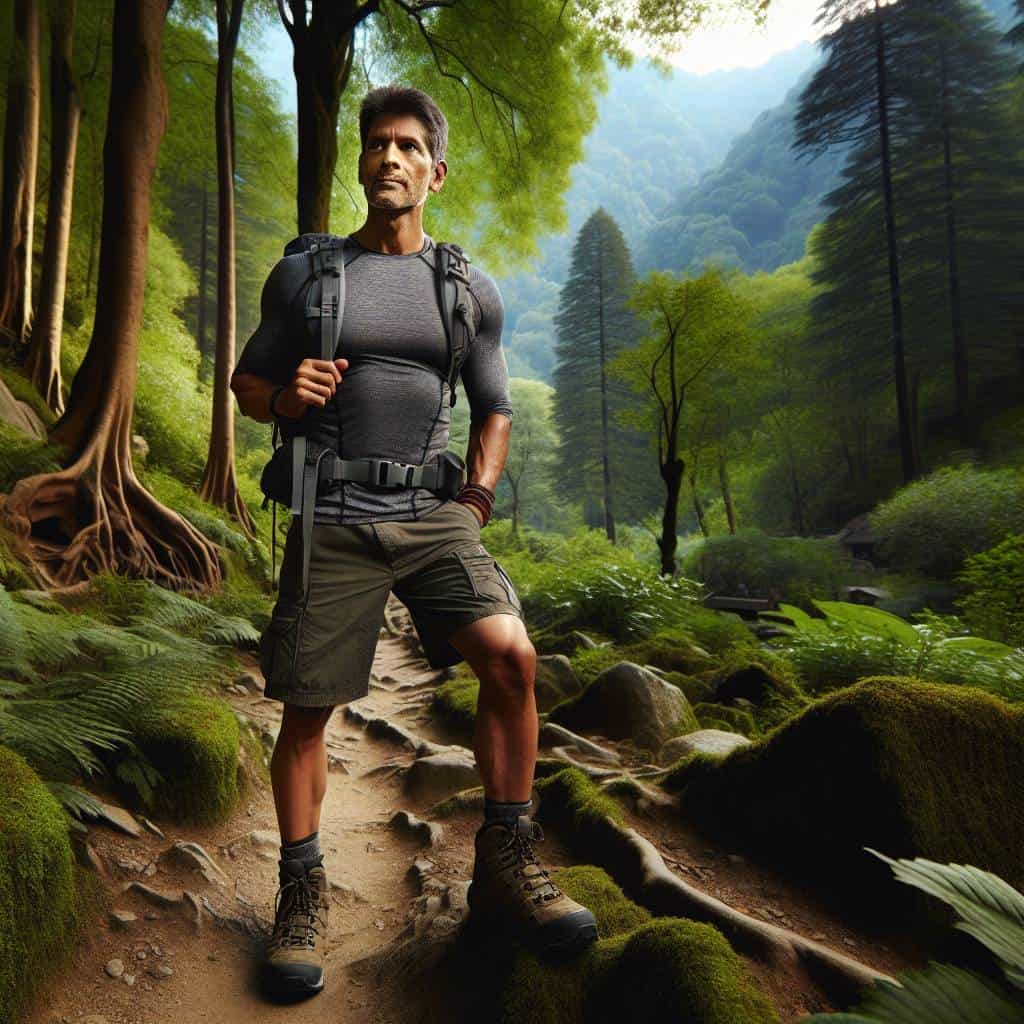I once thought that my daily urban sprint to catch the last subway train counted as preparation for a multi-day trek. Spoiler alert: it doesn’t. Picture this—me, gasping like a fish out of water on the first incline, realizing that dodging tourists on crowded sidewalks didn’t quite simulate the relentless climb of a mountain trail. In the city, my ego flourished; on that trail, it was ripped to shreds by the biting wind and the smug grin of nature. The truth is, unless your idea of ‘training’ involves collapsing in a heap every 20 minutes, you need a reality check.

Now, before you chuck your hiking boots in despair, know this: there’s a method to the madness. We’re diving into the gritty details of what it really takes to prepare for a trek that won’t leave you begging for a rescue chopper. Forget what you think you know about cardio and strength training. We’re talking real-world strategies here—how to make your legs steel and your lungs a pair of bellows, how to turn the wilderness into your playground rather than your punishment. Acclimatization isn’t just a fancy word; it’s your ticket to survival. Stick around, and I promise we’ll cut through the fluff and get straight to what works.
Table of Contents
- How My Aversion To Cardio Turned Into a Love-Hate Relationship with Hiking
- The Day I Realized My Legs Were Merely Decorative
- Why Panting on a Mountain Trail Is My New Normal
- Why Your Couch is the Worst Place to Train for the Trek from Hell
- Why Your Gym Routine Won’t Save You on the Trail
- The Brutal Truth of Trekking Prep
- The Brutal Truth About Trekking Training: FAQs
- The Long Road to Nowhere and Everywhere
How My Aversion To Cardio Turned Into a Love-Hate Relationship with Hiking

Cardio. The mere mention of it used to make me break out in a cold sweat—ironically, without actually having to move a muscle. I was that guy who believed the only thing worse than pounding the pavement was the relentless monotony of a treadmill, where your soul goes to die, one step at a time. But then, in a twist of fate, I stumbled—quite literally—onto hiking. It was supposed to be a one-time thing, a misguided attempt to escape the city’s concrete jungle, but something unexpected happened. The moment my boots hit the trail, I felt more alive than I ever did running on a hamster wheel to nowhere. The air was fresher, trees swayed instead of stationary walls closing in, and each incline was a brutal, yet invigorating, test of my will. Suddenly, cardio wasn’t just a mind-numbing chore; it was the key to unlocking a whole new world of grit and guts.
But let’s not romanticize this too much. My relationship with hiking is a complicated beast, teetering between passion and pure venom. The climbs are steep, the descents murder on my knees, and every trek seems to find new ways to remind me why I despise cardio. Yet, there’s something about the raw, unfiltered challenge that keeps me coming back for more. Training for a multi-day trek isn’t just about building endurance; it’s about forging a mental resilience that urban life just can’t teach. It meant ditching the gym’s cushy confines for the unpredictable chaos of nature, where the only thing you can count on is the trail’s unforgiving honesty. And while I might curse every incline and rail against the elements, there’s a twisted satisfaction in knowing I’ve traded my aversion for an addiction. This love-hate dance with hiking turned out to be the most brutal, yet rewarding, cardio session I never knew I needed.
The Day I Realized My Legs Were Merely Decorative
It was one of those brutally honest moments that only an encounter with nature’s harshness can deliver. There I was, standing at the base of a trail that looked innocent enough on the map but had morphed into a monstrous incline in reality. The city had lulled me into a false sense of fitness security, with my sporadic gym visits and casual strolls through concrete canyons. But as I confronted the sheer verticality of this path, my legs betrayed me, revealing their true purpose as mere decorative appendages. Each step was a negotiation; my calves screamed for a ceasefire, my quads threatened mutiny. The urban jungle had ill-prepared me for this war with the wilderness.
Panic set in as I realized my usual bravado was as thin as the air at this altitude. My legs, those traitorous limbs, were protesting louder than a subway strike. The trail was an unforgiving beast, mocking my hubris with every relentless switchback. I was a fool, a city slicker out of his depth, battling gravity and my own inflated sense of capability. It was a humbling lesson in humility—the kind that makes you question every life choice that led you to this particular precipice. But isn’t that what hiking is all about? Pushing beyond the limits of your comfortable existence, even if it means confronting your own decorative ineptitude.
Why Panting on a Mountain Trail Is My New Normal
Picture this: a city rat like me, used to the concrete jungle, suddenly thrust into a world where the air is thin and the ground is unforgiving. So, why does panting on a mountain trail feel like my new normal? It’s simple: I’ve traded the familiar hum of traffic for the raw, unfiltered silence of nature—and nature doesn’t care if I’m gasping like a fish out of water. Every wheezing breath is a reminder that I’ve swapped my comfort zone for something far more primal. Each uphill battle with gravity feels like a defiant middle finger to the sedentary lifestyle I’ve always known.
But let’s get real, my lungs are still adjusting to this madness. The city’s biggest hill was a gentle slope compared to these relentless ascents. Yet, there’s something strangely addictive about it. Maybe it’s the brutal honesty of the trail—it doesn’t pretend to be easy, and neither do I. So, I huff and puff on, not because I love the struggle, but because there’s an unspoken camaraderie between me and every other panting soul out there, each of us grappling with our own limitations and finding solace in the shared misery. This isn’t just hiking; it’s a gritty, raw reminder that sometimes the hard path is the only one worth taking.
So, you’re gearing up for the trek from hell and need some honest advice. Sure, you could spend hours on YouTube watching how-tos from people who’ve never left their air-conditioned homes, or you could actually talk to folks who’ve walked the walk. Speaking of real connections, if you’re in the mood for some engaging conversation, check out transgirls berlin. It’s not just about trekking; it’s about connecting with sharp minds and diverse perspectives, which, let’s face it, is the kind of mental workout you’ll need to survive both the trail and life in general.
Why Your Couch is the Worst Place to Train for the Trek from Hell
- Forget the gym—start pounding the pavement, because if your heart isn’t ready to dance its way up an incline, you’re toast.
- Think your biceps are enough? Try lugging a full pack uphill and see how your deltoids feel about it.
- Trail practice isn’t just for Boy Scouts—get your boots dirty, because sidewalks won’t prepare you for rugged reality.
- Acclimatization is more than a buzzword; it’s your ticket to not gasping like a fish out of water at altitude.
Why Your Gym Routine Won’t Save You on the Trail
Cardio isn’t just about clocking miles. It’s about conquering that hill when your lungs are screaming for mercy.
Forget the weight machines. Real strength training is hauling your own sorry self—and your gear—up a mountain.
Hiking practice isn’t a Sunday stroll in the park. It’s a dress rehearsal for nature’s grueling demands, so get out there and sweat.
The Brutal Truth of Trekking Prep
Forget what you know about ‘easy weekends’ and ‘light jogs.’ If you’re not gasping for breath and questioning your sanity, you’re not training hard enough for the wild’s relentless embrace.
The Brutal Truth About Trekking Training: FAQs
Is jogging around the block enough cardio for trekking?
Jogging around your neighborhood is cute, but it’s not going to cut it. You need to push your limits—think steep hills, uneven terrain, and the kind of sweat that makes you question your life choices. Cardio isn’t just about speed; it’s about endurance and resilience. Get uncomfortable.
Do I really need to lift weights for hiking?
If your idea of strength training is lifting your coffee mug, you’re in trouble. Trekking demands more from your body than a casual stroll. You need muscle to haul yourself up mountains and to carry that backpack that’s going to feel like a ton of bricks by day two. So yes, hit the weights—your future self will thank you.
How do I practice for the altitude without the mountains?
Unless you’ve got a spare mountain in your backyard, you’re going to have to get creative. Simulate those conditions with high-intensity interval training and lung-busting cardio sessions. Or, find the nearest high-rise and make those stairs your new best friend. It won’t be perfect, but it’s better than nothing.
The Long Road to Nowhere and Everywhere
So here I am, standing at the precipice of yet another trek, a masochist’s dream and a couch potato’s nightmare. It’s been a winding road, this love-hate affair with hiking. The kind that makes you question your sanity at 5,000 feet when every muscle protests louder than a disgruntled New Yorker in gridlock. But that’s the thing about these multi-day treks: they strip you bare, leaving you with nothing but raw determination and a pair of aching calves. All those hours of cardio, the sweat-drenched strength sessions, and the endless practice hikes—they morph into something intangible yet profoundly rewarding.
And, sure, I might grumble about the process, about the endless cycle of training and acclimatization that feels like a Sisyphean task. But deep down, I know it’s not just about conquering peaks or racking up miles. It’s about carving out a slice of clarity in a chaotic world, where every step forward is a victory over the noise that threatens to drown us. In those moments, when the world narrows down to the sound of my breath and the crunch of earth beneath my boots, I find something resembling peace. And maybe, just maybe, that’s worth the blisters and the early mornings. Or maybe I’m just a glutton for punishment. Either way, the journey continues.


